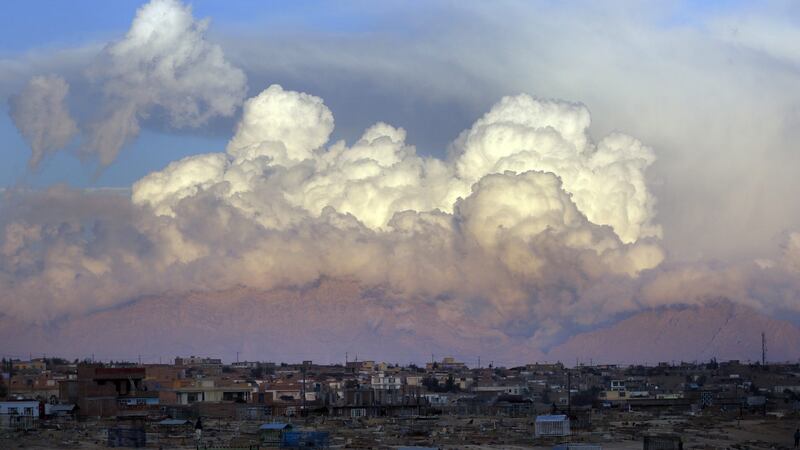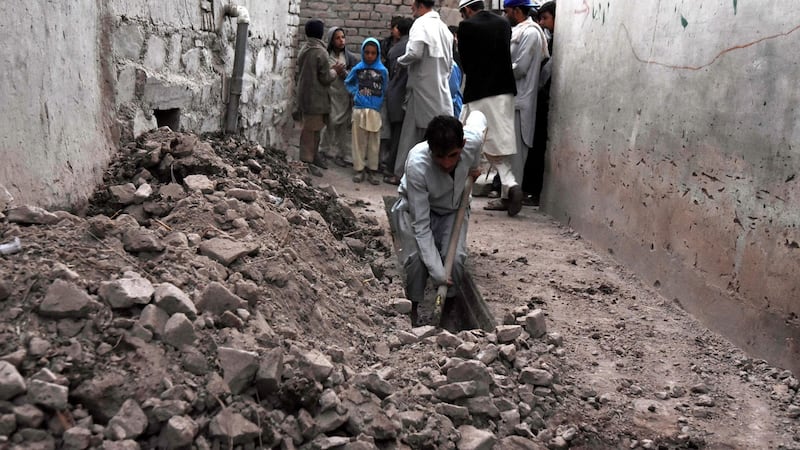A major earthquake has hit Afghanistan, northern Pakistan and parts of India, with more than 200 killed and early reports suggesting it has caused extensive damage in mountainous areas.
The magnitude 7.5 quake was centred in the province of Badakhshan in the Hindu Kush mountain range in Afghanistan’s far north, and occurred at a depth of 210km.
Officials said at least 76 people were known to have been killed in Pakistan and 24 in Afghanistan.


Twelve students were killed while trying to escape from a girls’ school in Taloqan, northeast Afghanistan, and six people killed in the eastern province of Nangarhar.
A police official in Badakhshan said dozens of houses were destroyed in two remote and sparsely populated rural districts, with some damage reported in Fayzabad.
Power was cut across much of the Afghan capital, Kabul, where the quake was felt for about 45 seconds.
Office workers ran out of their buildings, and houses shook, walls cracked and cars rolled in the street. Officials in the city could not be immediately reached as telephone lines appeared to be cut.
The death toll rose steadily as reports came in from around the country, with the National Disaster Management Authority warning it was likely to increase because remote areas could not yet be reached.
Chitral, an isolated former princely state near the border with Afghanistan, was badly hit and more than a dozen people killed. Among the dead were passengers travelling to a wedding when their four-wheel-drive vehicle was hit by falling boulders from the steep mountainsides.
“In Chitral it was just so shocking – we are so close to the epicentre,” said Asadullah Ghalib, a Chitral resident.
“There have been landslides, extensive damage to infrastructure and a lot of old houses have been completely damaged.”
Further to the east, business owners in the town of Karimabad in Gilgit-Baltistan said damage was minimal, although there were reports that sections of the Karakorum highway, the only land route linking Pakistan to China, were cut off by landslides.
In Pakistan, fears immediately focused on communities in mountainous and isolated parts of the north, which were already vulnerable to landslides after two days of unseasonably heavy rain and snowfall.
Rescue officials said at least 28 people were known to have died in northern tribal areas, 20 in the northwest, three in Gilgit-Baltistan and one in Pakistani Kashmir. Two women were reportedly killed in a house that collapsed in Swat.
In Islamabad, the capital, buildings were shaking for more than two minutes, sending office workers running for safety. The scenes were repeated in other major Pakistani cities, including Lahore and Faisalabad. Some mobile phone users reported that networks had gone dead.
At least one building collapsed in a bazaar in the city of Peshawar. The main hospital there reported a rush of more than 100 injured people in its emergency wards.
Pakistan’s army was ordered to “carry out immediate rescue work in any affected areas without waiting for formal orders”.
India’s northern-most region of Kashmir experienced intense and prolonged tremors, causing panic in areas that were hit by severe flooding last year. Power supplies and most mobile networks were knocked out, and there was structural damage to roads and buildings. No casualties were reported, however.
The quake was also felt in the Indian capital, Delhi, though no damage was immediately reported. Office buildings swayed and workers who had just returned from lunch ran out of buildings and gathered in the street or in car parks.
The earthquake struck six months after Nepal suffered its worst quake on record on April 25th. Including the toll from a major aftershock in May, 9,000 people died and 900,000 homes were damaged or destroyed.
The mountainous region is seismically active, with earthquakes being caused by the Indian subcontinent driving into and under the Eurasian landmass. Sudden tectonic shifts can cause enormous and destructive releases of energy.
In 2005, a 7.6-magnitude quake killed more than 80,000 in Pakistan.
Guardian, Reuters







